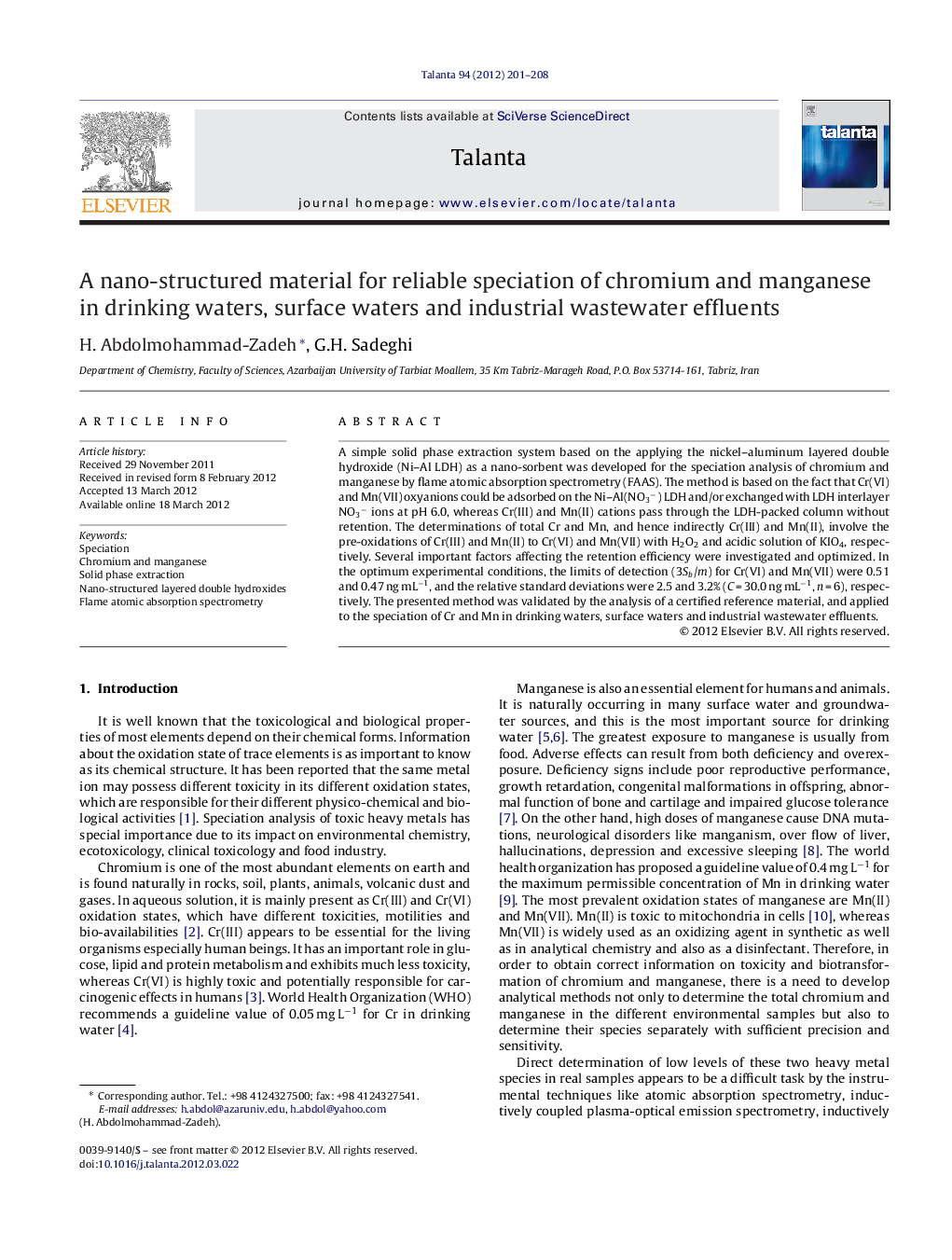| Article ID | Journal | Published Year | Pages | File Type |
|---|---|---|---|---|
| 1245636 | Talanta | 2012 | 8 Pages |
A simple solid phase extraction system based on the applying the nickel–aluminum layered double hydroxide (Ni–Al LDH) as a nano-sorbent was developed for the speciation analysis of chromium and manganese by flame atomic absorption spectrometry (FAAS). The method is based on the fact that Cr(VI) and Mn(VII) oxyanions could be adsorbed on the Ni–Al(NO3−) LDH and/or exchanged with LDH interlayer NO3− ions at pH 6.0, whereas Cr(III) and Mn(II) cations pass through the LDH-packed column without retention. The determinations of total Cr and Mn, and hence indirectly Cr(III) and Mn(II), involve the pre-oxidations of Cr(III) and Mn(II) to Cr(VI) and Mn(VII) with H2O2 and acidic solution of KIO4, respectively. Several important factors affecting the retention efficiency were investigated and optimized. In the optimum experimental conditions, the limits of detection (3Sb/m) for Cr(VI) and Mn(VII) were 0.51 and 0.47 ng mL−1, and the relative standard deviations were 2.5 and 3.2% (C = 30.0 ng mL−1, n = 6), respectively. The presented method was validated by the analysis of a certified reference material, and applied to the speciation of Cr and Mn in drinking waters, surface waters and industrial wastewater effluents.
► Ni–Al LDH was used as a packing material for the speciation of Cr and Mn. ► Cr(VI) and Mn(VII) oxyanions could retain on the Ni–Al LDH-packed column. ► The effects of variables on the retention efficiency of analytes were studied. ► The method was applied to the speciation of Cr and Mn in different water samples.
